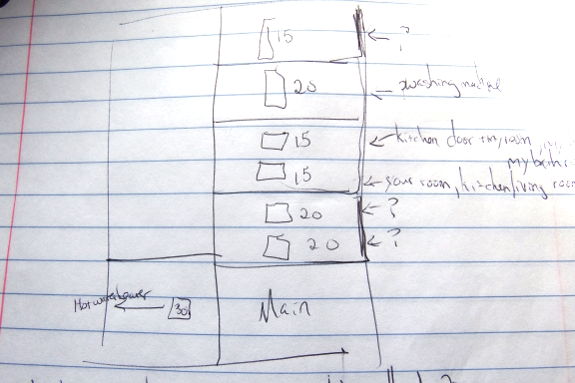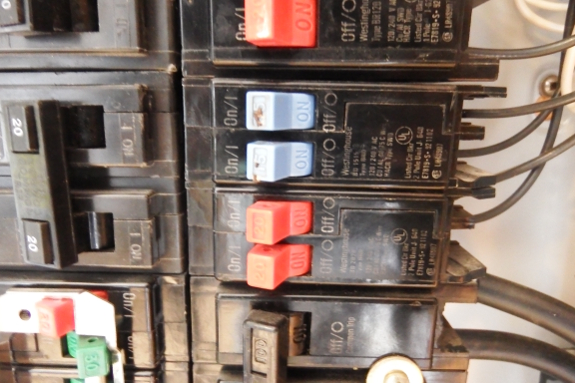
Figuring out the breaker box, round 2

Figuring out our
breaker box became a
lot more intuitive once our electricity was turned on. At that point,
we were able to use the tried-and-true technique of turning on all the
lights in the house then flicking breakers one by one to see when each
zone went dark.
In the process, I
learned that I'd incorrectly added up the amperage already in use in
our box. First of all, there were three wired but apparently unused
breakers in operation. I'm a little leery of simply deleting them, but
I'm equally leery of leaving juice running to wires that seem to go
nowhere. At the moment, I'm leaning toward pulling those mystery
breakers and associated wires out and using the spots for something
else.

I also learned that the
two breakers shown in the center of the photo above are what's known as
tandem (or cheater) breakers. Each one allows the wiring of two
unrelated circuits in a single spot. Despite the name, they're
not necessarily cheating...although they can be.
Tandem breakers can also be a
problem because they're small and heat up easily, so they have a
tendency to flip a lot. Sure enough, Mark's breaker flicks every time
he turns his space heater and his big monitor on at the same time.
Assuming those confusing slots mentioned above really aren't in
use, it seems like a good idea to ditch the "cheaters" and wire each of
our zones onto a standalone circuit that will be less likely to
overheat.
Want more in-depth information? Browse through our books.
Or explore more posts by date or by subject.
About us: Anna Hess and Mark Hamilton spent over a decade living self-sufficiently in the mountains of Virginia before moving north to start over from scratch in the foothills of Ohio. They've experimented with permaculture, no-till gardening, trailersteading, home-based microbusinesses and much more, writing about their adventures in both blogs and books.
Want to be notified when new comments are posted on this page? Click on the RSS button after you add a comment to subscribe to the comment feed, or simply check the box beside "email replies to me" while writing your comment.

Hi Anna and Mark,
I have an 1903 house. Big conductors going out the breaker box. 14 gauge [15 amp] at the end. Oh well.
Glad you are finally getting juice. Keep your connections tight. And fix any flickering circuits.
New wire is cheap. I did all my new stuff with 12 gauge even for lights.
John